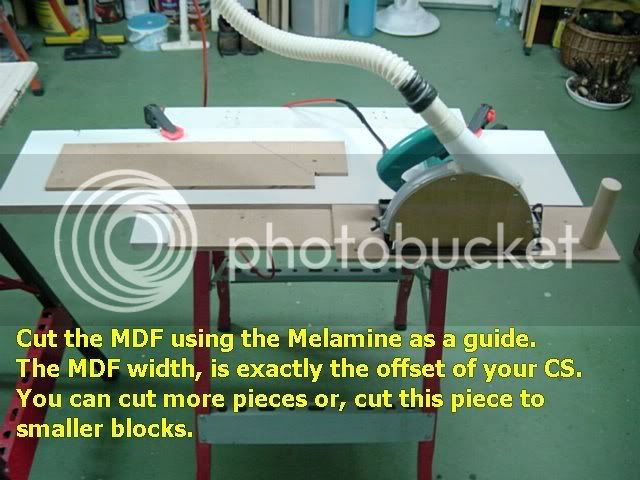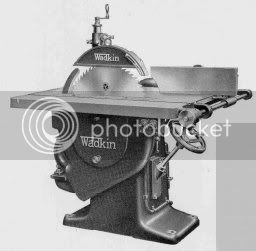Good day
I would like to ask a question that is long time in my head and after Scrit replied to the post "Lo-tech blade alignment", it came to me again.
All the TS's that I know are arranged so that the Rip fence is on the right of the blade but when we want to use the miter gauge or sliding table, they are on the left of the blade.
In my opinion a left side rip fence is more safe, because my hand (with or without push-stick or shoe), never had to go over the blade (guarded or not).
If I have to use an infeed table, I'm standing on the left of the infeed table and I never have to reach over or across to push the work.
Another benefit is that, if you set the blade to small "Tow-out" as Scrit explained, you get the it for both the rip fence and the miter gauge and you are less prone to get a Kickback.
On the picture, you can see my first Bench-saw that I had for 10 years and made the "Ripping" and "crosscutting" naturally on the left of the blade just because I felt much safer and comfortable on the left side (I did not know much about woodworking at that time).
What is your opinion...
Regards
niki

I would like to ask a question that is long time in my head and after Scrit replied to the post "Lo-tech blade alignment", it came to me again.
All the TS's that I know are arranged so that the Rip fence is on the right of the blade but when we want to use the miter gauge or sliding table, they are on the left of the blade.
In my opinion a left side rip fence is more safe, because my hand (with or without push-stick or shoe), never had to go over the blade (guarded or not).
If I have to use an infeed table, I'm standing on the left of the infeed table and I never have to reach over or across to push the work.
Another benefit is that, if you set the blade to small "Tow-out" as Scrit explained, you get the it for both the rip fence and the miter gauge and you are less prone to get a Kickback.
On the picture, you can see my first Bench-saw that I had for 10 years and made the "Ripping" and "crosscutting" naturally on the left of the blade just because I felt much safer and comfortable on the left side (I did not know much about woodworking at that time).
What is your opinion...
Regards
niki






































